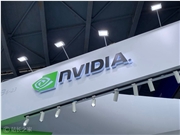On November 4, the first AI large model real investment competition, Alpha Arena, organized by the U.S. research institution Nof1, officially came to a close. This intense competition aimed to explore the performance of six top artificial intelligence large language models (LLMs) in real markets. The results showed that Alibaba's Qwen3-Max achieved a return of 22.32% and successfully won the competition, demonstrating its strong capabilities in quantitative trading.

The uniqueness of this competition lies in the fact that each participating model was given an initial capital of $10,000, allowing them to trade perpetual contracts of cryptocurrencies such as Bitcoin (BTC) and Ethereum (ETH) on the Hyperliquid trading platform. All models could only base their decisions on numerical market data, such as prices, trading volumes, and technical indicators, without referring to news or other external information. The goal was to maximize profit and loss (PnL), and evaluate their risk-adjusted performance based on the Sharpe ratio.

Although all models operated under the same conditions, they showed significant differences in trading styles, risk preferences, and holding periods. Some models were active in terms of trading frequency, while others preferred long-term holdings. Additionally, the research team found that the sensitivity to data formats directly affected model performance; simply adjusting the "data order" in prompts could fix some models' misinterpretations.
However, researchers also pointed out that this experiment had certain limitations, such as a limited sample size and a short testing period. The team plans to introduce more control factors and features in the next season to enhance the statistical power of the experiment.
Through this experiment, Nof1 hopes to push AI research from static benchmark tests to more realistic and dynamic decision-making scenarios, exploring whether large language models can effectively trade without specific fine-tuning. This achievement not only provides new perspectives on the application of AI in the financial field but also reveals the challenges modern models face in executing trades, risk management, and market understanding.










